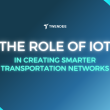In the span of just a few decades, the internet has revolutionized every aspect of modern life, from how we communicate and consume media to how we shop and handle finances. This digital transformation has been largely driven by the evolution of web services, which have transitioned through several phases, each marked by its own set of technologies, philosophies, and user experiences.

Today, we stand on the brink of a new era, moving from the interactive and social media-driven Web2 to the decentralized and blockchain-powered Web3. This shift promises to redefine our online interactions, offering unprecedented levels of privacy, security, and user control.
But how did we get here, and what makes Web3 fundamentally different from its predecessor? In this comprehensive guide, we will explore the journey of web services from the static pages of Web1 to the dynamic interfaces of Web2, and finally, to the decentralized platforms of Web3.
By understanding this evolution, readers can gain insights into the future of the internet and how it will impact society, business, and personal freedoms in the digital age. Join us as we delve into the “evolution of web services”, navigating through the transition “from Web2 to Web3”, and unveiling the transformative potential of this new internet technology.
The Dawn of the Internet and Web1
The Internet, as we know it today, began as a simple network of computers capable of sharing information across long distances. This rudimentary form of communication laid the foundation for what would become the World Wide Web, or Web1, in the early 1990s.
Web1 is often characterized by static web pages that were primarily designed for reading, with little to no interaction from the user side. These web pages were coded in HTML (HyperText Markup Language) and were accessible through browsers like Netscape Navigator, marking the beginning of the internet’s transformation into a global information repository.
Early Internet: A Digital Frontier
The early internet was a digital frontier, a new realm for academics, researchers, and eventually the public to explore. It was a time of innovation and discovery, where the potential of digital connectivity began to unfold. The use of dial-up connections to access the internet was widespread, and although this meant dealing with slow speeds and busy signals, the allure of accessing a world of information was irresistible to many.
Static Web Pages: The Building Blocks
In the era of Web1, websites were akin to digital brochures. Each page was hand-coded with HTML, creating a static experience. Interaction was minimal, limited to simple forms and email links.
Websites served as informational portals where content was king, but user engagement and dynamic content were yet to evolve. The lack of interactivity meant that the early web was a one-way street: publishers could disseminate information, but users were passive recipients.

Despite these limitations, the advent of Web1 was revolutionary. It democratized access to information, breaking down geographical and social barriers. For the first time in history, people could access vast amounts of information from their homes, schools, and workplaces.
This period laid the groundwork for the interactive web we know today, setting the stage for profound changes in how we communicate, learn, and do business.
The simplicity and limitations of Web1, however, were soon to be overshadowed by the next phase of the internet’s evolution. As technology advanced, so did the capabilities of the web, leading to the development of Web2 – a more interactive and social web.
This transition marked a significant shift in the internet’s role in society, from a static information medium to a dynamic platform for collaboration and sharing.
In retrospect, the dawn of the internet and the era of Web1 were pivotal moments in digital history. They not only introduced the world to the possibilities of digital information exchange but also set the foundation for the interactive and decentralized innovations that would follow.
As we delve further into the evolution of web services, the transition from Web1 to Web2 stands as a testament to human ingenuity and the unending quest for better, more efficient means of communication.
The Rise of Web2: The Interactive Web
Following the foundational days of Web1, the internet experienced a transformative evolution that ushered in the era of Web2. Characterized by its dynamic content, social media platforms, and user-generated content, Web2 marked a significant departure from the static pages of its predecessor.
This new phase of the internet was defined by interactivity, where users not only consumed content but also became creators, contributors, and critics. The introduction of blogs, wikis, and, most notably, social networking sites, transformed the digital landscape into a vibrant, interactive community.
A New Era of Connectivity
Web2, often referred to as the “interactive web” or “social web,” represents the evolution of web services into platforms that support collaboration and sharing among users. This era saw the rise of major social media platforms such as Facebook, Twitter, and YouTube, each playing a pivotal role in making the internet a more participatory environment.
These platforms empowered users to share their lives, opinions, and creations with a global audience, fostering a sense of global community and real-time communication.
User-Generated Content and Interactivity
The hallmark of Web2 is its emphasis on user-generated content. Blogs allowed individuals to publish their writing to a potentially vast audience without the need for a publisher. Wikis, most famously exemplified by Wikipedia, enabled collective knowledge building through user contributions and edits. Social media platforms became the new public squares, where news, ideas, and personal stories are shared and discussed openly.
This era also introduced advancements in web technologies, such as AJAX (Asynchronous JavaScript and XML), which enabled web pages to update content dynamically without needing to reload the entire page. This improvement significantly enhanced user experience, making web interactions smoother and more engaging.
Impact on Society: A Connected World
The rise of Web2 had profound implications for society. It democratized content creation, allowing anyone with internet access to contribute to the global exchange of information. The barriers to entry for sharing one’s voice were dramatically lowered, leading to a more diverse and rich online discourse. However, this era also raised new challenges, including concerns over privacy, data security, and the spread of misinformation.
The interactive nature of Web2 has transformed how businesses operate, how political campaigns are run, and how communities are formed and maintained. E-commerce evolved, with user reviews and social sharing becoming crucial to consumer behavior, while political movements leveraged social media to organize and mobilize.
As transformative as Web2 has been, its centralized nature—where a few large companies control vast amounts of data and interaction—has led to growing concerns over privacy, data ownership, and online freedom. This centralization, coupled with the desire for more privacy-centric and user-empowered experiences, paved the way for the next evolutionary leap in internet services: Web3, the decentralized web.
In reflecting on the rise of Web2, it’s clear that this era has been instrumental in shaping the modern internet landscape. It not only enhanced the interactivity and dynamism of the web but also set the stage for ongoing discussions about user rights, data ownership, and the future direction of internet technologies.
As we look ahead to Web3, the legacy of Web2 provides both inspiration and cautionary tales for the next generation of web services.
Transitioning to Web3: The Decentralized Web
As the digital landscape continues to evolve, the internet is embarking on its most revolutionary phase yet: the transition to Web3.

This new era promises to address many of the limitations and concerns raised by the centralized nature of Web2 by leveraging blockchain technology, smart contracts, and decentralized applications (dApps). Web3 is not just an upgrade in technology; it represents a fundamental shift towards a more secure, private, and user-empowered internet.
Concept Introduction: A Paradigm Shift
Web3 is often described as the “decentralized web,” where the power and control of the internet shift from centralized entities (such as tech giants) to the users themselves.
This transition is made possible through blockchain technology, which allows for the creation of decentralized networks where transactions and data are not controlled by a single entity but are instead distributed across the network. This ensures greater transparency, security, and resistance to censorship.
Key Technologies: Blockchain, Smart Contracts, and dApps
Blockchain Technology: At the heart of Web3 lies blockchain technology, a decentralized ledger that records transactions across multiple computers in a way that ensures the integrity and security of data.
Smart Contracts: These are self-executing contracts with the terms of the agreement directly written into lines of code. They automate transactions and agreements, enabling trustless interactions between parties on the blockchain.
Decentralized Applications (dApps): Unlike traditional apps that run on a single server, dApps operate on a blockchain or peer-to-peer network of computers, offering a decentralized service.
These technologies together form the backbone of Web3, enabling a new wave of internet applications that prioritize user autonomy, privacy, and ownership of data. For instance, decentralized finance (DeFi) platforms allow users to lend, borrow, and trade assets without the need for traditional financial intermediaries, while non-fungible tokens (NFTs) provide a way to own, sell, and trade digital assets securely.
From Centralization to Decentralization: Shifting Control
The transition to Web3 is significantly marked by the shift from centralized control to decentralized governance. In Web2, large companies often control user data, leading to privacy concerns and potential misuse. Web3’s decentralized nature means that users have control over their own data, with transactions and interactions occurring directly between users without the need for intermediaries.
This not only enhances privacy but also opens up new possibilities for internet usage, where trust is built into the system rather than being reliant on any single authority.
Challenges and Opportunities
While Web3 offers exciting possibilities, the transition also poses challenges, including scalability, user experience, and regulatory hurdles. Despite these challenges, the potential benefits of a decentralized web — such as enhanced security, reduced censorship, and a more equitable internet — are driving innovation and adoption.
As we stand at the brink of this new era, the transition to Web3 represents a significant step forward in the quest for a more democratic, user-controlled internet. It promises to reshape not just the technical infrastructure of the web but also the very notion of digital ownership and identity.
As the decentralized web continues to evolve, it opens up a realm of possibilities for creating a more inclusive, secure, and user-centric online world.
Comparing Web2 and Web3
The evolution of the internet from Web2 to Web3 represents a fundamental shift in how online platforms operate and interact with users. While Web2 introduced the world to the interactive web, filled with social media platforms and user-generated content, Web3 promises a future of decentralization, enhanced security, and user sovereignty over data.
Understanding the key differences between these two phases of the internet is crucial for grasping the potential impact of Web3 on the digital landscape.
Centralization vs. Decentralization
Web2: Centralized platforms, such as social media giants and cloud service providers, dominate the Web2 ecosystem. These entities control access to information, user data, and the digital experience, leading to concerns over privacy, data breaches, and censorship.
Web3: Decentralization is the hallmark of Web3, with blockchain technology allowing data and transactions to be distributed across a network rather than stored in a single location. This reduces the risk of data breaches and censorship while returning control and ownership of data back to users.
User Control and Data Ownership
Web2: Users often surrender control of their personal data to use services, with little transparency on how their data is used or monetized by corporations.
Web3: Empowers users with control over their personal data through blockchain and cryptographic technologies. In the Web3 paradigm, users can decide how their data is shared and used, with the potential for monetizing their own information.

Data Privacy and Security
Web2: Despite advancements in security protocols, Web2’s centralized nature makes it inherently vulnerable to attacks and data breaches, compromising user privacy.
Web3: Offers enhanced security features through decentralized networks and encryption. By eliminating central points of failure, Web3 reduces the risk of large-scale data breaches and enhances user privacy.
Innovation and Development
Web2: Innovation is often driven by large corporations with the resources to develop new services and platforms, potentially stifling competition and innovation from smaller players.
Web3: Encourages a more open and collaborative development environment, where developers can build on existing protocols and contribute to a diverse ecosystem of decentralized applications (dApps).
Economic Models and Value Distribution
Web2: Economic benefits are predominantly captured by platform owners and shareholders. Users who contribute content and data to platforms rarely receive a share of the value they create.
Web3: Introduces new economic models, such as tokenomics, which can distribute value more equitably among users, developers, and stakeholders. Through mechanisms like cryptocurrencies and tokens, users can directly benefit from participating in and contributing to platforms.
In summary, the transition from Web2 to Web3 is not merely a technological upgrade but a reimagining of the internet’s structure and purpose. Web3 envisions a more equitable, secure, and user-centric online world, addressing many of the criticisms leveled against the centralized web.
As this new phase of the internet continues to develop, it promises to reshape our digital interactions and the very fabric of the online community.
Challenges and Opportunities in the Web3 Era
The transition from Web2 to Web3 is paving the way for a revolutionary change in the internet’s infrastructure and user experience. This shift promises to address several issues inherent in the centralized web, such as privacy concerns, data ownership, and security vulnerabilities.
However, as with any significant technological advancement, the move towards a decentralized web also presents its own set of challenges. Understanding these challenges and the opportunities they present is crucial for navigating the future landscape of the internet.
Challenges in the Web3 Era
Scalability and Performance: One of the primary concerns facing Web3 technologies, particularly blockchain, is scalability. Current blockchain networks can struggle with high transaction costs and slower processing times compared to centralized systems. Finding solutions to scale these networks while maintaining security and decentralization is a significant challenge.

User Experience (UX): For widespread adoption, Web3 applications need to offer a user experience that matches or exceeds that of Web2. Currently, the complexity of using blockchain-based applications, including managing wallets and understanding transaction fees, can be a barrier for non-technical users.
Regulatory and Legal Issues: The decentralized nature of Web3 raises complex regulatory and legal questions. Governments and regulatory bodies are still figuring out how to approach cryptocurrencies, smart contracts, and other Web3 innovations, leading to a landscape of legal uncertainty.
Interoperability: As the Web3 ecosystem expands, ensuring that different blockchain networks and applications can work together seamlessly is crucial. Interoperability is necessary for creating a cohesive, user-friendly environment across various platforms and services.
Opportunities in the Web3 Era
Enhanced Privacy and Security: By leveraging encryption and decentralization, Web3 offers the promise of enhanced privacy and security for users. Unlike in Web2, where data breaches are common, Web3’s structure inherently protects user data from central points of failure.
True Ownership and Control: Web3 technologies enable users to have true ownership and control over their data and digital assets. This shift could revolutionize online content creation, intellectual property, and digital asset management, providing users with more autonomy and potential revenue streams.
Innovative Economic Models: Web3 introduces new economic models that allow users to directly benefit from their participation and contributions to the ecosystem. Through tokenomics and decentralized finance (DeFi), users can earn rewards, access financial services, and trade digital assets in ways not possible in Web2.
A More Equitable Internet: The decentralized nature of Web3 has the potential to create a more equitable internet, where value is distributed more fairly among creators, users, and developers. This could lead to a reduction in the dominance of large tech corporations and foster a more diverse and competitive online marketplace.
Despite the challenges, the opportunities presented by Web3 are vast and transformative. As the technology matures and solutions to current obstacles are found, Web3 has the potential to redefine our online lives, offering a more private, secure, and user-empowered internet.
The journey towards a fully realized Web3 is just beginning, and it promises to be an exciting one, full of innovation and new possibilities for users and developers alike.
The Future of Web Services
As we stand on the precipice of a new digital era with the advent of Web3, the future of web services looks both promising and fundamentally different from what we’ve known. The transition towards a decentralized internet is not just a technological shift but a reimagining of digital interactions, data ownership, and online communities.
This move has the potential to reshape the internet in a way that prioritizes user autonomy, security, and innovation.
A Decentralized and User-Empowered Internet
The core of Web3 lies in its ability to return control and ownership back to the users. This paradigm shift towards decentralization promises a future where web services are not controlled by a handful of tech giants but are instead run on decentralized networks that ensure users’ privacy and data security.
As we move forward, we can expect a more user-empowered internet where individuals have sovereignty over their digital identities and assets.
Breakthroughs in Technology and User Experience
For Web3 to reach its full potential and achieve widespread adoption, significant advancements in underlying technologies and improvements in user experience are necessary. Innovations in blockchain scalability, interoperability, and user-friendly interfaces will play a critical role in making decentralized web services accessible to a broader audience.
The future will likely see a seamless integration of Web3 services into everyday online activities, making the complexities of blockchain and decentralization invisible to the end-user.
New Economic Models and Opportunities
Web3 opens up new economic models that challenge the traditional ways of doing business online. With tokenomics, decentralized finance (DeFi), and non-fungible tokens (NFTs), we’re already witnessing the emergence of new opportunities for creators, developers, and users to earn and exchange value directly. As these models evolve, they will redefine online value creation, leading to a more inclusive and equitable digital economy.
Challenges and Governance
The path to a fully realized Web3 is fraught with challenges, including technical hurdles, regulatory uncertainties, and concerns over digital divide issues. How these challenges are addressed will significantly impact the future of web services.
Furthermore, governance models for decentralized networks will need to evolve to ensure that Web3 remains inclusive, secure, and aligned with users’ best interests.
The Social Impact of Web3
Beyond technology and economics, the shift to Web3 has profound social implications. By enabling more secure and private online interactions, reducing the potential for censorship, and empowering users with control over their data, Web3 has the potential to support a more open and democratic internet. However, it also prompts important conversations about digital literacy, access, and the role of technology in society.

As we look to the future, it’s clear that the journey towards Web3 is not just about building new technologies but about redefining our relationship with the digital world. The vision for Web3—a more decentralized, secure, and user-centric internet—holds immense promise for transforming web services and, by extension, our digital lives. The road ahead is complex and uncertain, but the potential for positive change makes it a journey worth undertaking.










What do you think?